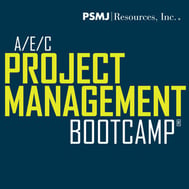 Even the most experienced project manager encounters project problems at one time or another. What can be done to eliminate or reduce the number of project problems?
Even the most experienced project manager encounters project problems at one time or another. What can be done to eliminate or reduce the number of project problems?
You can begin by considering one or more of these nine ways to conquer your biggest project problems:
1. Pick the best solution, and go with it. Every alternative you have developed is 90 percent perfect. But until you determine the final direction for the project, all the work on alternative solutions is wasted time and money. Pick the one that is guaranteed to work, and go with it.
2. Only do what is required by the contract. Review the scope of the work, and make sure you are only doing those tasks that you are being paid for. If the client is insisting that you add to the scope, then you have every right to ask for additional fee and an extension of the schedule.
3. Keep production on schedule. If the schedule slips, bring in some outside help for a short period of time to get the production back to where it should be. You can borrow staff from another project or even from another firm that you work with. For nontechnical tasks, you can use clerical and administrative employees to do routine jobs.
4. Make sure you are using the correct balance of experienced staff. Too many beginners on the project make time and fee consuming mistakes that you can’t afford when you are trying to get back on track. Senior people are much more productive if they don’t have to spend time supervising trainees. Likewise, the project manager can do more technical work while eliminating supervisory time.
5. Postpone non-critical administrative duties until the crunch is over. Then spend the extra time on the most critical aspects of the project. (Don’t overuse this technique—principals may tire easily of such requests.)
6. Optimize your production techniques. Do you use CAD or reprographic tricks to reduce the time it takes to finish the set? Make sure your best people are working on CAD—they know the most advanced productivity.
7. Renegotiate consultant contracts. If the total budget is in trouble, perhaps consultants are to blame. Review and renegotiate their contracts if necessary. Also, if some of the consultants’ tasks will not be needed, eliminating them may save the project budget.
8. Don’t hide in your office doing paperwork. As the PM, it’s your job to be out there with the team focusing on the productive work of the project. The paperwork will wait until after you get back on schedule.
9. Finally, have a talk with your client. Instead of immediately asking for an extension, suggest ways in which the client can help achieve the target date, such as the use of client staff for certain tasks. The client may have access to resources that can help you, be willing to let certain activities slide until a later date, or even be willing to give you more time. Review the project to see if the client has been the cause of any unnecessary delays. If so, you have every right to ask for an extension.
When all is said and done, clients want project managers who do what they say they are going to do. Make no mistake – in today’s business environment, PMs who promise the world but fail to deliver will be exposed and your architecture, engineering, or construction (A/E/C) firm will suffer. So dealing with project problems head-on is certainly good practice.
Now it's your turn: What have you done to conquer your biggest project problems?
 Looking to hone your PM skills: PSMJ’s A/E/C Project Management Bootcamp will give PMs the knowledge and tools that they need to perform better, more efficiently, and with greater attention to client service. We’ll make good PMs GREAT PMs!
Looking to hone your PM skills: PSMJ’s A/E/C Project Management Bootcamp will give PMs the knowledge and tools that they need to perform better, more efficiently, and with greater attention to client service. We’ll make good PMs GREAT PMs!
For more project management tips, checkout these PSMJ blog posts:
What Are The Traits Of The Best Project Managers?
10 Things Every Project Manager Must Know
Are You a Project Manager or Project Admin?



